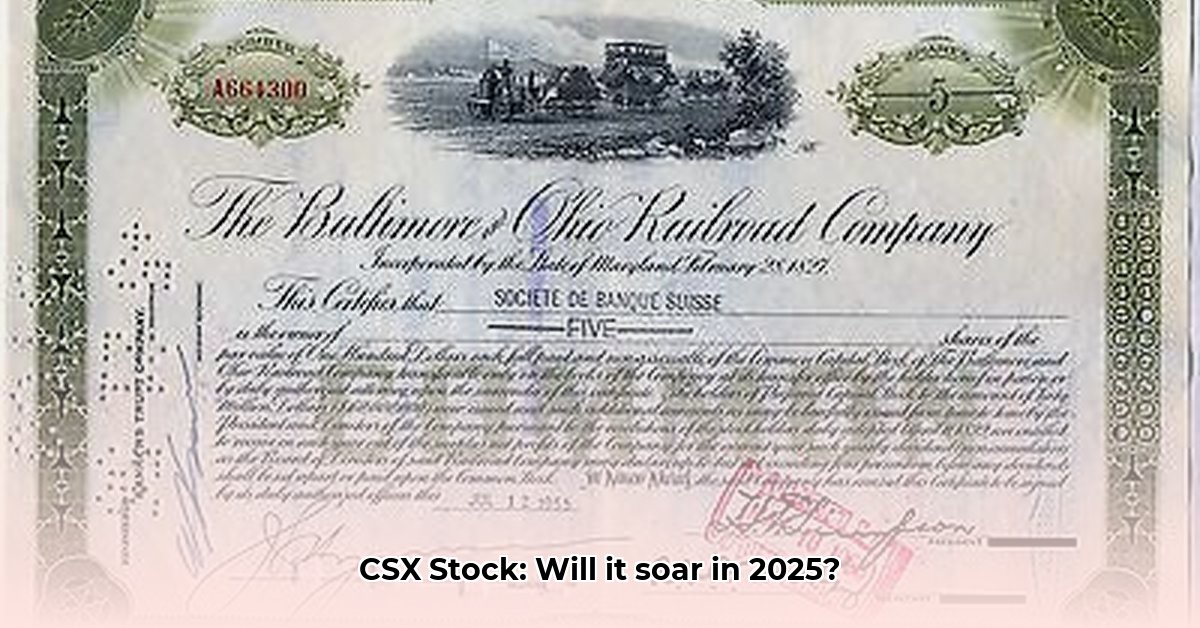
CSX Corporation: A Deep Dive into Investment Potential for 2025
This in-depth report analyzes CSX Corporation's (CSX) investment potential for 2025, considering its financial health, industry dynamics, and inherent risks. We will examine key financial metrics, evaluate competitive positioning, and assess the impact of external factors to provide a comprehensive overview for potential investors. This analysis is based on publicly available data and does not constitute financial advice.
CSX's Financial Performance: A Detailed Examination
CSX, a leading North American freight railroad, exhibits strong financial performance across several key metrics. However, understanding the nuances of these figures is crucial for a robust investment assessment. Is CSX's current financial strength sustainable in a dynamic market environment? Let's delve into the specifics.
Profitability and Efficiency
CSX consistently demonstrates impressive profitability. The company reported a gross profit margin of 39.4%, an operating margin of 36.8%, and a net profit margin of 31.2% – figures exceeding many industry benchmarks. Return on Equity (ROE) reached a robust 23.5%, suggesting efficient use of shareholder capital. Similarly, the Return on Assets (ROA) of 12.7% indicates strong asset utilization. Net income for the fiscal year exceeded $4.6 billion, a testament to CSX's operational efficiency. However, it's important to note that these metrics are sensitive to external factors such as fuel costs and overall economic conditions. Are these profitability levels indicative of sustainable long-term growth, or are they susceptible to cyclical shifts?
Liquidity and Financial Strength
CSX maintains a healthy liquidity position, mitigating potential short-term financial risks. The current ratio of 1.35 and a quick ratio of 1.12 suggest ample ability to cover immediate liabilities. The company holds substantial cash reserves of $2.7 billion, further enhanced by $1.5 billion in undrawn credit facilities. The 7.3% year-over-year growth in working capital exemplifies the company's robust financial health. This financial strength provides a buffer against unexpected market downturns. Yet, a long-term investor must consider the allocation of these reserves – are they being strategically invested for future growth and expansion, or are they simply being held as a precautionary measure?
Navigating the Risks: Challenges and Opportunities
While CSX's financial performance is strong, several risks need careful consideration. These risks, if not properly managed, could significantly impact future profitability and shareholder returns.
Fuel Price Volatility
Fuel costs constitute a substantial variable expense for CSX, creating inherent uncertainty. Annual fuel cost fluctuations of approximately $250 million underscore the need for effective hedging strategies and exploration of alternative fuels. How effectively CSX manages fuel price volatility is a crucial factor for investors.
Economic Sensitivity
The freight transportation industry is cyclical and highly sensitive to macroeconomic conditions. Annual fluctuations in freight volumes of ±3.5% indicate potential revenue instability during economic downturns. Understanding the correlation between economic cycles and CSX's revenue streams is critical for risk assessment.
Geographic Concentration
A substantial portion (75.9%) of CSX's revenue stems from the Northeastern and Southeastern US. This geographic concentration poses a distinct risk, as economic downturns in these areas could disproportionately affect the company's overall performance. Diversification strategies should be evaluated to mitigate this risk.
Competitive Landscape and Strategic Initiatives
CSX operates in a competitive market, with key rivals including Union Pacific and Norfolk Southern. While CSX holds a strong market position, sustained success necessitates a strategic response to evolving market dynamics. CSX's investments in infrastructure, technology, and operational efficiency are crucial for maintaining a competitive edge. These investments need to be assessed for their potential to generate future returns and improve long-term profitability.
Investment Considerations: A Structured Approach
Evaluating CSX stock requires a multifaceted approach, incorporating both quantitative and qualitative factors. To successfully analyze CSX’s potential, consider these steps:
Thorough Financial Analysis: Conduct an in-depth examination of CSX's financial statements, comparing its performance to industry benchmarks and considering long-term trends.
Risk Assessment: Evaluate the potential impact of fuel price volatility, economic downturns, and geographic concentration on CSX's profitability.
Competitive Analysis: Assess CSX's competitive position relative to its main rivals, considering its strategic initiatives and market share.
Industry Outlook: Analyze the broader freight railroad industry trends, including technological advancements, regulatory changes, and evolving consumer behavior.
Investment Timeline: Align your investment strategy with your long-term financial goals, considering the inherent risks and potential rewards.
Diversification: Diversify your portfolio to mitigate risks associated with investing in a single stock.
Conclusion: A Cautious Optimism
CSX demonstrates strong financial performance and a robust balance sheet. However, inherent risks associated with fuel price volatility and economic sensitivity require careful consideration. Investors should conduct a thorough analysis before making investment decisions, taking into account the company's financial health, competitive positioning, and strategic initiatives. This report intends to provide a comprehensive overview; professional financial advice should be consulted before making any investment decisions. Remember, past performance is not indicative of future results.